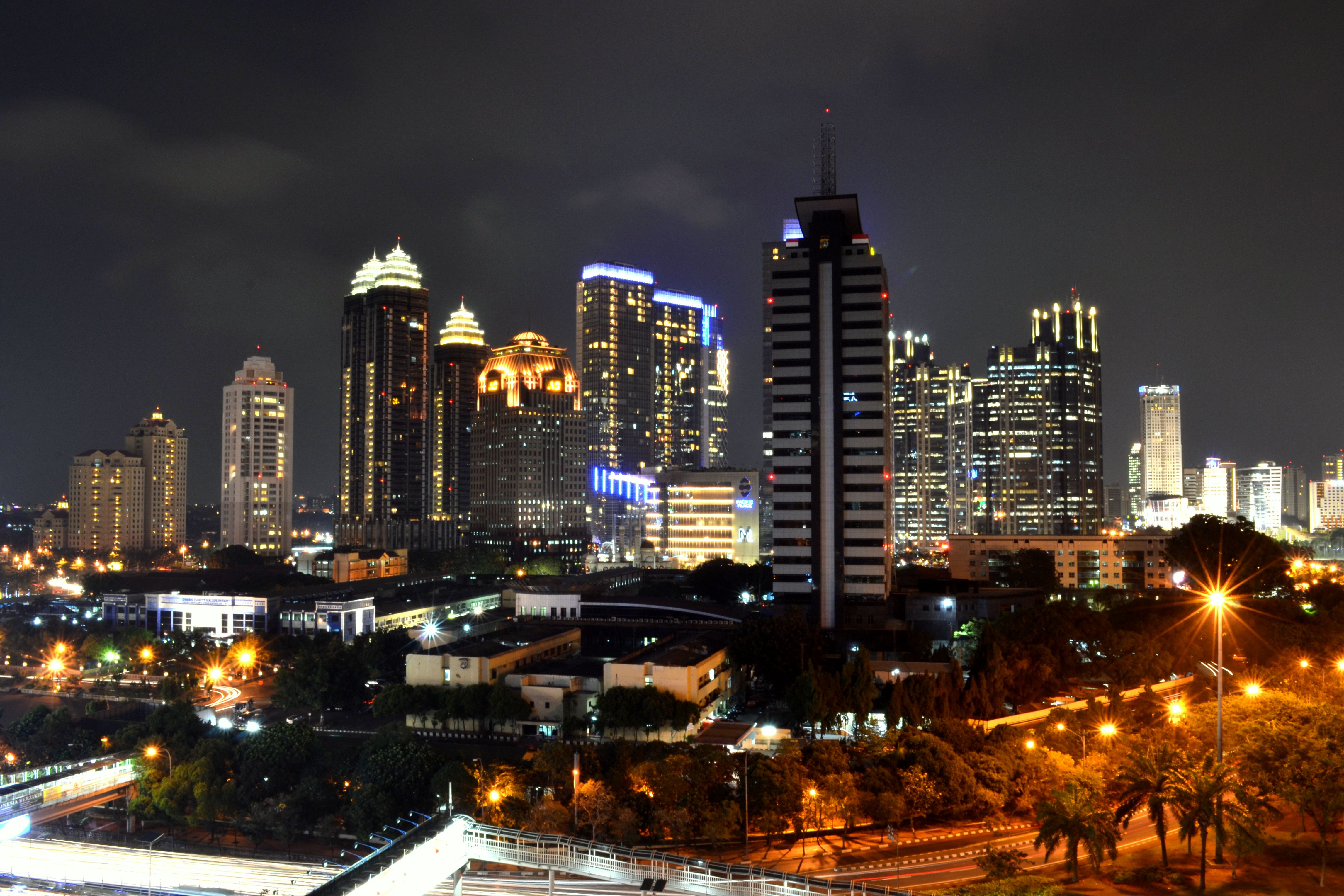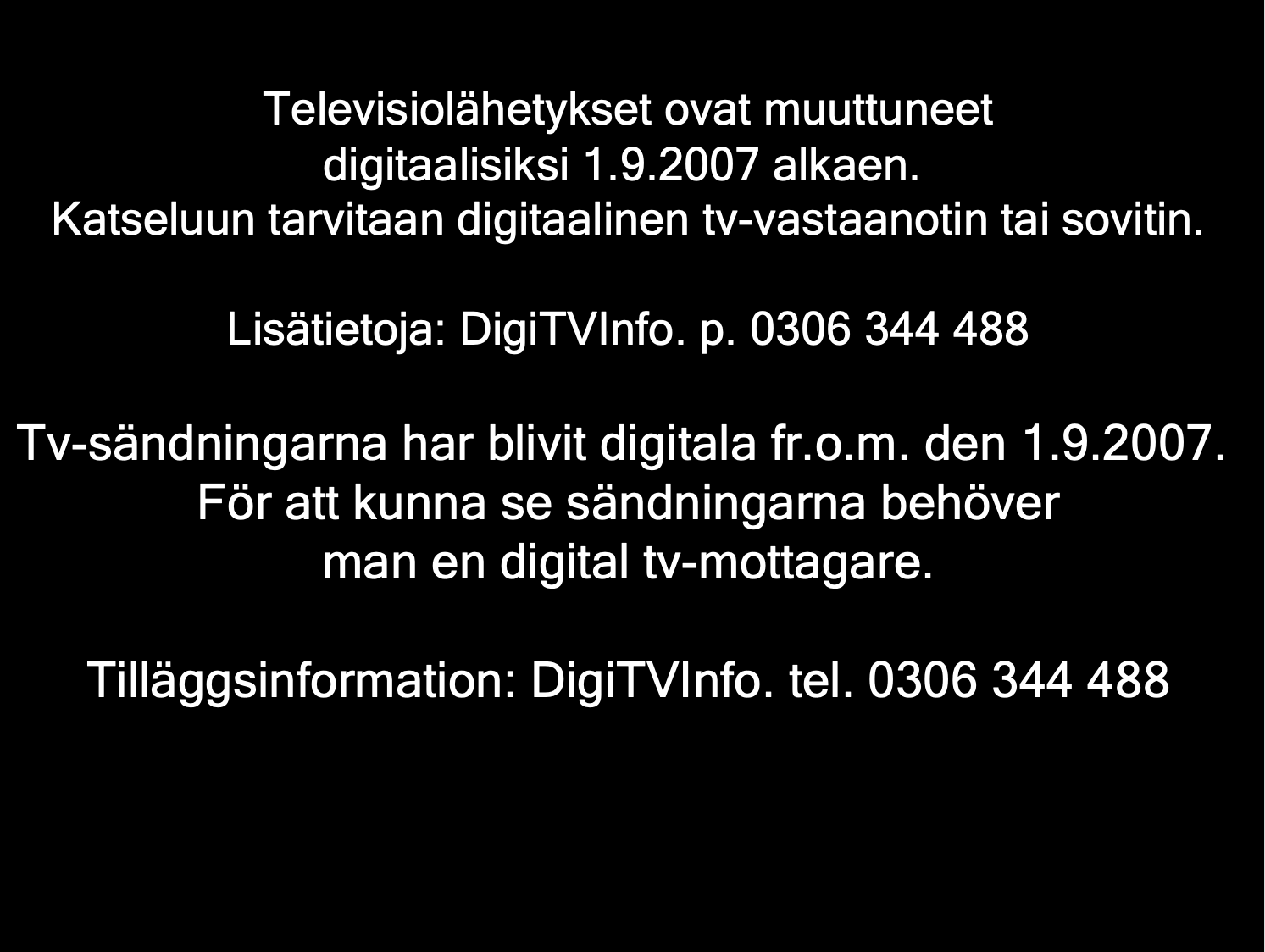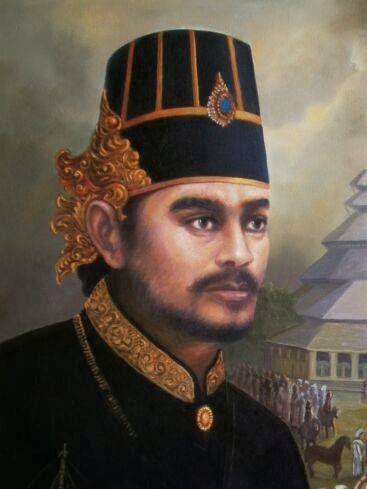|
TVRI Jakarta
TVRI Jakarta (officially LPP TVRI Stasiun Jakarta) is a regional public television station owned by TVRI, serving Special Capital Region of Jakarta, Indonesia and surrounding areas. TVRI Jakarta studios are located in Jalan Gerbang Pemuda, Central Jakarta, the same place as the TVRI national headquarters. The station broadcasts on both analog and digital terrestrial, as well as on TVRI website's live streaming and ''TVRI Klik'' app. History The station began broadcasting on 1 January 1983 as Programa Dua TVRI (or simply Programa Dua or Programa 2), about six years later before the first Indonesian private television station RCTI is airing. The station is primarily serving Jakarta region from the very beginning, in the early years it was airing more urban-oriented programming than TVRI main channel (TVRI Nasional). The single first program to broadcast was English-language news ''TVRI News'' for half an hour at 18:30 WIB, under the responsibility of the News section. On 26 M ... [...More Info...] [...Related Items...] OR: [Wikipedia] [Google] [Baidu] |
Jakarta
Jakarta (; , bew, Jakarte), officially the Special Capital Region of Jakarta ( id, Daerah Khusus Ibukota Jakarta) is the capital city, capital and list of Indonesian cities by population, largest city of Indonesia. Lying on the northwest coast of Java, the world's list of islands by population, most populous island, Jakarta is the list of cities in ASEAN by population, largest city in Southeast Asia and serves as the diplomatic capital of ASEAN. The city is the economic, cultural, and political centre of Indonesia. It possesses a province-level status and has a population of 10,609,681 as of mid 2021.Badan Pusat Statistik, Jakarta, 2022. Although Jakarta extends over only , and thus has the smallest area of any Provinces of Indonesia, Indonesian province, its Jakarta metropolitan area, metropolitan area covers , which includes the satellite cities Bogor, Depok, Tangerang, South Tangerang, and Bekasi, and has an estimated population of 35 million , making it the List of m ... [...More Info...] [...Related Items...] OR: [Wikipedia] [Google] [Baidu] |
Western Indonesian Time
The Indonesian Archipelago geographically stretches across four time zones from UTC+06:00 in Aceh to UTC+09:00 in Papua. However, the Indonesian government recognises only three time zones in its territory, namely: *Western Indonesia Time (WIB) — seven hours ahead ( UTC+07:00) of the Coordinated Universal Time (UTC); *Central Indonesia Time (WITA) — eight hours ahead ( UTC+08:00) of UTC; *Eastern Indonesia Time (WIT) — nine hours ahead ( UTC+09:00) of UTC. The boundary between the Western and Central time zones was established as a line running north between Java and Bali through the provincial boundaries of West and Central Kalimantan. The border between the Central and Eastern time zones runs north from the eastern tip of Indonesian Timor to the eastern tip of Sulawesi. Daylight saving time (DST) is no longer observed anywhere in Indonesia. Current usage In Indonesia, the keeping of standard time is divided into three time zones: These time zones were first obse ... [...More Info...] [...Related Items...] OR: [Wikipedia] [Google] [Baidu] |
2007 Establishments In Indonesia
7 (seven) is the natural number following 6 and preceding 8. It is the only prime number preceding a cube. As an early prime number in the series of positive integers, the number seven has greatly symbolic associations in religion, mythology, superstition and philosophy. The seven Classical planets resulted in seven being the number of days in a week. It is often considered lucky in Western culture and is often seen as highly symbolic. Unlike Western culture, in Vietnamese culture, the number seven is sometimes considered unlucky. It is the first natural number whose pronunciation contains more than one syllable. Evolution of the Arabic digit In the beginning, Indians wrote 7 more or less in one stroke as a curve that looks like an uppercase vertically inverted. The western Ghubar Arabs' main contribution was to make the longer line diagonal rather than straight, though they showed some tendencies to making the digit more rectilinear. The eastern Arabs developed the digit ... [...More Info...] [...Related Items...] OR: [Wikipedia] [Google] [Baidu] |
Television Channels And Stations Established In 2007
Television, sometimes shortened to TV, is a telecommunication medium for transmitting moving images and sound. The term can refer to a television set, or the medium of television transmission. Television is a mass medium for advertising, entertainment, news, and sports. Television became available in crude experimental forms in the late 1920s, but only after several years of further development was the new technology marketed to consumers. After World War II, an improved form of black-and-white television broadcasting became popular in the United Kingdom and the United States, and television sets became commonplace in homes, businesses, and institutions. During the 1950s, television was the primary medium for influencing public opinion.Diggs-Brown, Barbara (2011''Strategic Public Relations: Audience Focused Practice''p. 48 In the mid-1960s, color broadcasting was introduced in the U.S. and most other developed countries. The availability of various types of archival stor ... [...More Info...] [...Related Items...] OR: [Wikipedia] [Google] [Baidu] |
Television Stations In Indonesia
Television, sometimes shortened to TV, is a telecommunication medium for transmitting moving images and sound. The term can refer to a television set, or the medium of television transmission. Television is a mass medium for advertising, entertainment, news, and sports. Television became available in crude experimental forms in the late 1920s, but only after several years of further development was the new technology marketed to consumers. After World War II, an improved form of black-and-white television broadcasting became popular in the United Kingdom and the United States, and television sets became commonplace in homes, businesses, and institutions. During the 1950s, television was the primary medium for influencing public opinion.Diggs-Brown, Barbara (2011''Strategic Public Relations: Audience Focused Practice''p. 48 In the mid-1960s, color broadcasting was introduced in the U.S. and most other developed countries. The availability of various types of archival stor ... [...More Info...] [...Related Items...] OR: [Wikipedia] [Google] [Baidu] |
Digital Television
Digital television (DTV) is the transmission of television signals using digital encoding, in contrast to the earlier analog television technology which used analog signals. At the time of its development it was considered an innovative advancement and represented the first significant evolution in television technology since color television in the 1950s. Modern digital television is transmitted in high-definition television (HDTV) with greater resolution than analog TV. It typically uses a widescreen aspect ratio (commonly 16:9) in contrast to the narrower format of analog TV. It makes more economical use of scarce radio spectrum space; it can transmit up to seven channels in the same bandwidth as a single analog channel, and provides many new features that analog television cannot. A transition from analog to digital broadcasting began around 2000. Different digital television broadcasting standards have been adopted in different parts of the world; below are the more wid ... [...More Info...] [...Related Items...] OR: [Wikipedia] [Google] [Baidu] |
Jakarta Metropolitan Area
The Jakarta metropolitan area or Greater Jakarta, known locally as Jabodetabek (an acronym of Jakarta– Bogor– Depok–Tangerang– Bekasi), and sometimes extended to Jabodetabekjur (with the acronym extended to include part of Cianjur Regency), or Jabodetabekpunjur (further extended to include Puncak and the Cipanas district), is the most populous metropolitan area in Indonesia. It includes the national capital (Jakarta Special Capital Region, as the core city) as well as five satellite cities and three complete regencies. The original term "Jabotabek" dated from the late 1970s and was revised to "Jabodetabek" in 1999 when "De" (for "Depok") was inserted into the name following its formation. The term "Jabodetabekjur" or "Jabodetabekpunjur" was legalised on the Presidential Regulation Number 54 of 2008, although the name Jabodetabek is more commonly used. The area comprises Jakarta Special Capital Region and parts of West Java and Banten provinces, specifically the three ... [...More Info...] [...Related Items...] OR: [Wikipedia] [Google] [Baidu] |
Digital Television Transition
The digital television transition, also called the digital switchover (DSO), the analogue switch/sign-off (ASO), the digital migration, or the analogue shutdown, is the process in which older analogue television broadcasting technology is converted to and replaced by digital television. Conducted by individual nations on different schedules, this primarily involves the conversion of analogue terrestrial television broadcasting infrastructure to digital terrestrial (DTT), a major benefit being extra frequencies on the radio spectrum and lower broadcasting costs, as well as improved viewing qualities for consumers. The transition may also involve analogue cable conversion to digital cable or Internet Protocol television, as well as analog to digital satellite television. Transition of land based broadcasting was begun by some countries around 2000. By contrast, transition of satellite television systems was well underway or completed in many countries by this time. It is an i ... [...More Info...] [...Related Items...] OR: [Wikipedia] [Google] [Baidu] |
Time In Indonesia
The Indonesian Archipelago geographically stretches across four time zones from UTC+06:00 in Aceh to UTC+09:00 in Papua. However, the Indonesian government recognises only three time zones in its territory, namely: *Western Indonesia Time (WIB) — seven hours ahead ( UTC+07:00) of the Coordinated Universal Time (UTC); *Central Indonesia Time (WITA) — eight hours ahead ( UTC+08:00) of UTC; *Eastern Indonesia Time (WIT) — nine hours ahead ( UTC+09:00) of UTC. The boundary between the Western and Central time zones was established as a line running north between Java and Bali through the provincial boundaries of West and Central Kalimantan. The border between the Central and Eastern time zones runs north from the eastern tip of Indonesian Timor to the eastern tip of Sulawesi. Daylight saving time (DST) is no longer observed anywhere in Indonesia. Current usage In Indonesia, the keeping of standard time is divided into three time zones: These time zones were first ob ... [...More Info...] [...Related Items...] OR: [Wikipedia] [Google] [Baidu] |
Banten
Banten ( id, Banten; Sundanese: , romanized ''Banten'') is the westernmost province on the island of Java, Indonesia. Its capital city is Serang. The province borders West Java and the Special Capital Region of Jakarta on the east, the Java Sea on the north, the Indian Ocean on the south, and the Sunda Strait (which separates Java from the neighbouring island of Sumatra) on the west. The province covers an area of . It had a population of over 11.9 million in the 2020 census, up from about 10.6 million in 2010.Badan Pusat Statistik, Jakarta, 2021. The estimated mid-2021 population was 12.06 million.Badan Pusat Statistik, Jakarta, 2022. Formerly part of the province of West Java, Banten was declared a separate province in 2000. The region is the homeland of the Bantenese people, whose culture differs slightly from that of West Java's Sundanese people. The northern half (particularly the areas near Jakarta and the Java Sea coast) has recently experienced rapid rises in po ... [...More Info...] [...Related Items...] OR: [Wikipedia] [Google] [Baidu] |
TVRI (TV Channel)
TVRI (also referred to as TVRI Nasional, TVRI Siaran Nasional, or Kanal 1 TVRI Nasional, formerly also known as TVRI Stasiun Pusat Jakarta) is the main national public television channel owned by LPP Televisi Republik Indonesia (TVRI). The channel began broadcasting on 24 August 1962, making it the first television station in Indonesia. The channel was also the only television channel choice in Indonesia until 1989, when Programa Dua TVRI (now TVRI Jakarta) in Jakarta broadcast separately from TVRI and private television stations began broadcasting. TVRI is networked with regional TVRI stations on analog broadcasts (except Special Capital Region of Jakarta and its surroundings), but broadcasts fully and independent from regional stations on digital broadcasts. The channel is available on terrestrial (both analog and digital, with analog broadcast to be shut down in 2022), satellite, and most of pay television providers, as well as on ''TVRI Klik'' streaming service. Histor ... [...More Info...] [...Related Items...] OR: [Wikipedia] [Google] [Baidu] |
Ultra High Frequency
Ultra high frequency (UHF) is the ITU designation for radio frequencies in the range between 300 megahertz (MHz) and 3 gigahertz (GHz), also known as the decimetre band as the wavelengths range from one meter to one tenth of a meter (one decimeter). Radio waves with frequencies above the UHF band fall into the super-high frequency (SHF) or microwave frequency range. Lower frequency signals fall into the VHF (very high frequency) or lower bands. UHF radio waves propagate mainly by line of sight; they are blocked by hills and large buildings although the transmission through building walls is strong enough for indoor reception. They are used for television broadcasting, cell phones, satellite communication including GPS, personal radio services including Wi-Fi and Bluetooth, walkie-talkies, cordless phones, satellite phones, and numerous other applications. The IEEE defines the UHF radar band as frequencies between 300 MHz and 1 GHz. Two other IEEE radar ... [...More Info...] [...Related Items...] OR: [Wikipedia] [Google] [Baidu] |



